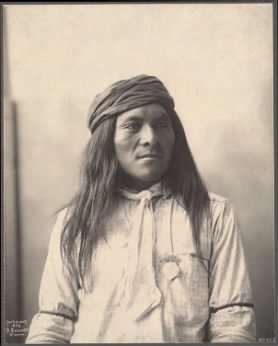Montezuma Well
One of the most interesting sites of ancient habitation in Verde valley is known as Montezuma Well, and it is remarkable how little attention has been paid to it by archeologists.[21]Dr Mearns, in his article on the ancient dwellings of Verde valley, does not mention the well, and Mindeleff simply refers to the brief description by Dr Hoffman in 1877. These ruins are worthy of more study than I was able to give them, for like many other travelers I remained but a short time in the neighborhood. It is possible, however, that some of my hurried observations at this point may be worthy of record.
Montezuma Well is an irregular, circular depression, closely resembling a volcanic crater, but evidently, as Dr Hoffman well points out, due to erosion rather than to volcanic agencies. As one approaches it from a neighboring ranch the road ascends a low elevation, and when on top the visitor finds that the crater occupies the whole interior of the hill. The exact dimensions I did not accurately determine, but the longest diameter of the excavation is estimated at about 400 feet; its depth possibly 70 feet. On the eastern side this depression is separated from Beaver creek by a precipitous wall which can not be scaled from that side. At the time of my visit there was considerable water in the "well," which was reported to be very deep, but did not cover the whole bottom. It is possible to descend to the water at one point on the eastern side, where a trail leads to the water's edge.
There appears to be a subterranean waterway under the eastern rim of the well, and the water from the spring rushes through this passage into Beaver creek. At the time of my visit this outflow was very considerable, and in the rainy season it must be much greater. The well is never dry, and is supplied by perennial subterranean springs rather than by surface drainage.
The geological agency which has been potent in giving the remarkable crater-like form to Montezuma Well was correctly recognized by Dr Hoffman and others as the solvent or erosive power of the spring. There is no evidence of volcanic formation in the neighborhood, and the surrounding rocks are limestones and sandstones. Not far from Navaho springs there is a similar circular depression, called Jacob's Well, but which was dry when visited by me. This may later be found to have been formed in a similar way. At several places in Arizona there are formations of like geological character.









































































